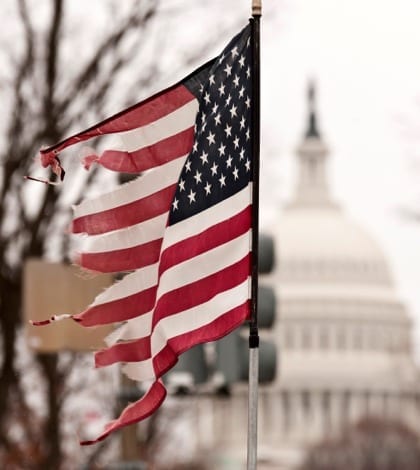Guide To Federal Agency Plans During Government Shutdown
October 2, 2013

More than a day into the partial shutdown of the U.S. government, negotiations to bring federal employees back to work are only just beginning. Some activities imperative to day-to-day business remain active, but it varies from agency to agency. Today’s General Counsel put together a breakdown of how key federal agencies plan to handle the shutdown.
The Department of Commerce: The DOC qualifies 13 percent of its employees as essential and they will stay on to continue essential work, including: patent and trademark application processing; all services of the National Technical Information Service (NTIS); and export enforcement. The DOC’s International Trade Administration (ITA) will maintain only five percent of staff, temporarily shutting down the program. The Bureau of Industry and Security will retain 40 percent of its employees to continue export enforcement and administrative functions. See the agency’s full shutdown plan here.
The Department of Justice: As a “significant portion” of the DOJ’s mission involves protection of human life and property, the agency has identified nearly 85 percent of its workforce as essential during the shutdown. Criminal litigation will continue, but civil litigation will be curtailed or postponed where possible. See the agency’s full shutdown plan here.
The Department of the Treasury: The Treasury’s departmental office will continue managing the government’s cash position, its borrowing/debt programs, and economic analysis. The distribution of Social Security checks will continue, but the Internal Revenue Service (IRS) will halt most non-automated collections and tax processing activities, as well as scheduled audits. The U.S. Mint and Bureau of Engraving and Printing will continue operations as normal, as they are funded from sources other than annual Congressional appropriations. See the agency’s full shutdown plan here.
The Equal Employment Opportunity Commission: The EEOC will continue docketing charges under the federal employment discrimination statute, litigating lawsuits where continuance has not been granted, and examining new charges to determine whether prompt judicial action is necessary to protect life or property. However, EEOC staff will not be investigating charges filed during the shutdown and will not process FOIA requests. Nor will it hold mediations, federal sector hearings or make decisions on federal employees’ appeals of discrimination complaints. See the agency’s full shutdown plan here.
The Export-Import Bank of the United States: The Ex-Im Bank will retain just 3.6 percent of its employees, but will continue to process and deposit funds received and pay claims under its guarantee and insurance programs. See the agency’s full shutdown plan here.
U.S. Federal Courts: The Judiciary plans to continue operating for 10 days after a government shutdown. At that point, funds run out. See the full shutdown plan here.
The Federal Trade Commission: The FTC will maintain a little more than 20 percent of its workforce during the shutdown to continue reviewing premerger reports, investigating reported transactions for antitrust issues, and litigating cases that challenge mergers or acquisitions. Up to 30 percent of the Bureau of Consumer Protection’s staff will continue evaluations to determine what cases may cause immediate harm. See the agency’s full shutdown plan here.
The National Labor Relations Board: The NLRB will postpone unfair labor practice hearings before Administrative Law Judges, and the agency’s electronic filing system will not be up for the duration of the shutdown. Extensions, where allowed, will be granted, however the six-month statute of limitations for filing unfair labor practice charges remains in effect. See the agency’s full shutdown plan here.
The Occupational Safety and Health Administration: OSHA has furloughed 90 percent of its employees, and authorized staff will respond only to the most significant workplace emergencies, including fatalities and catastrophes as well as employee complaints related to hazards that present a high risk of death or serious physical harm. See the agency’s full shutdown plan here.
The Securities and Exchange Commission: The SEC will continue to handle emergency enforcement matters, go on with litigation that cannot be deferred, and monitor its “tips, complaints, and referrals” system. The agency’s filing systems and its Market Watch activities will also continue. Just over 250 staffers, or less than one percent of the agency’s workforce, will be on hand to continue operations. See the agency’s full shutdown plan here.
The U.S. Supreme Court: The Court plans to continue with normal operations through Oct. 4. At that point, if the government remains shut down, SCOTUS will provide further details. See the full shutdown plan here.
Read full article at:
Daily Updates
Sign up for our free daily newsletter for the latest news and business legal developments.




